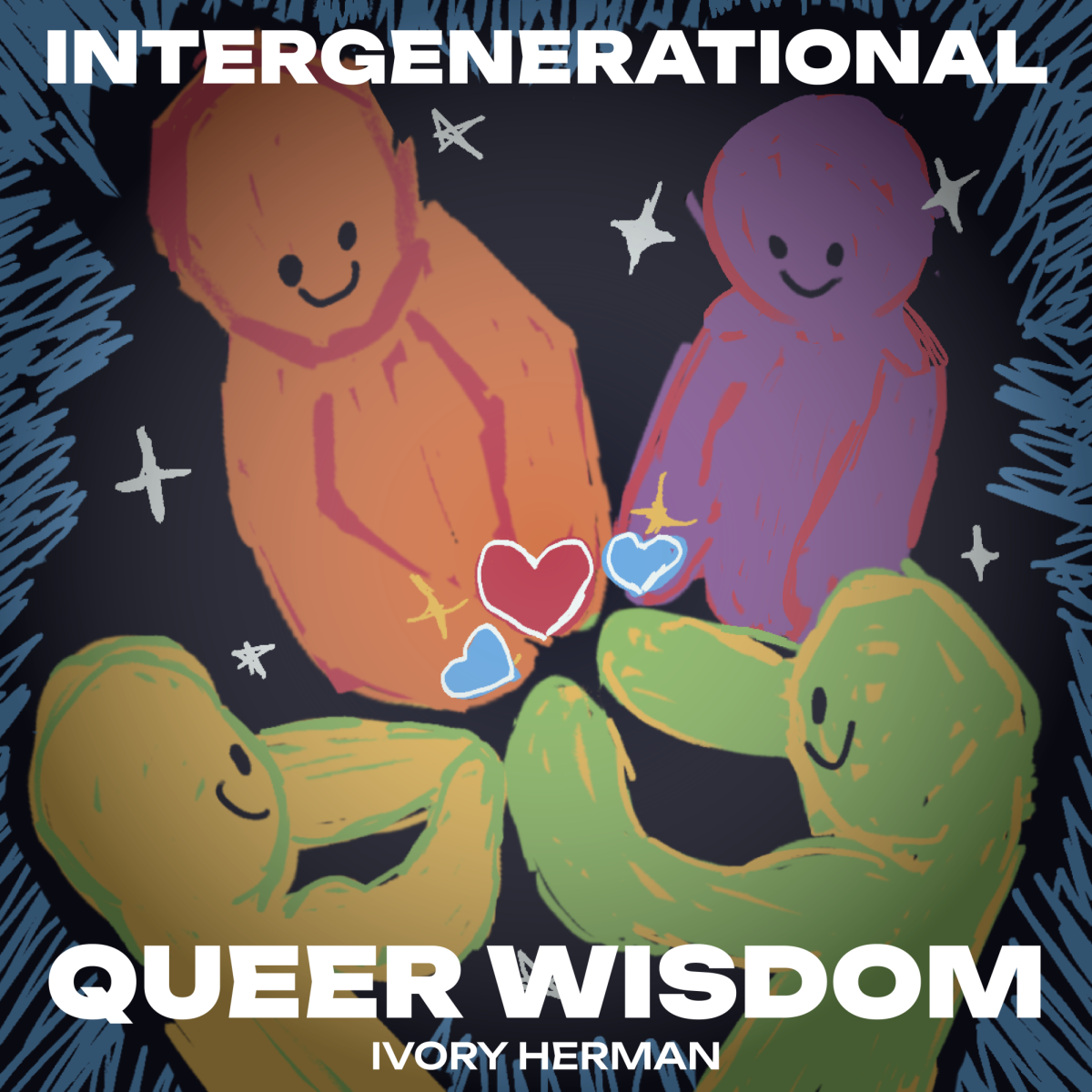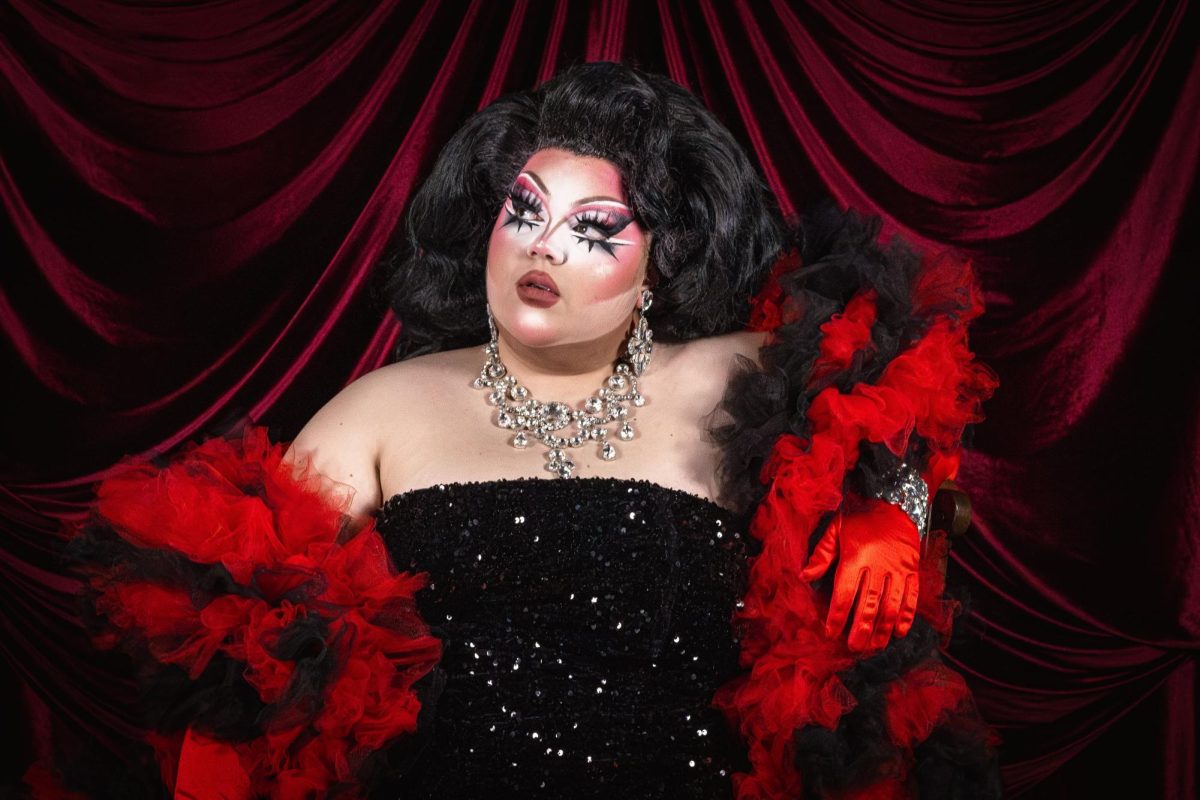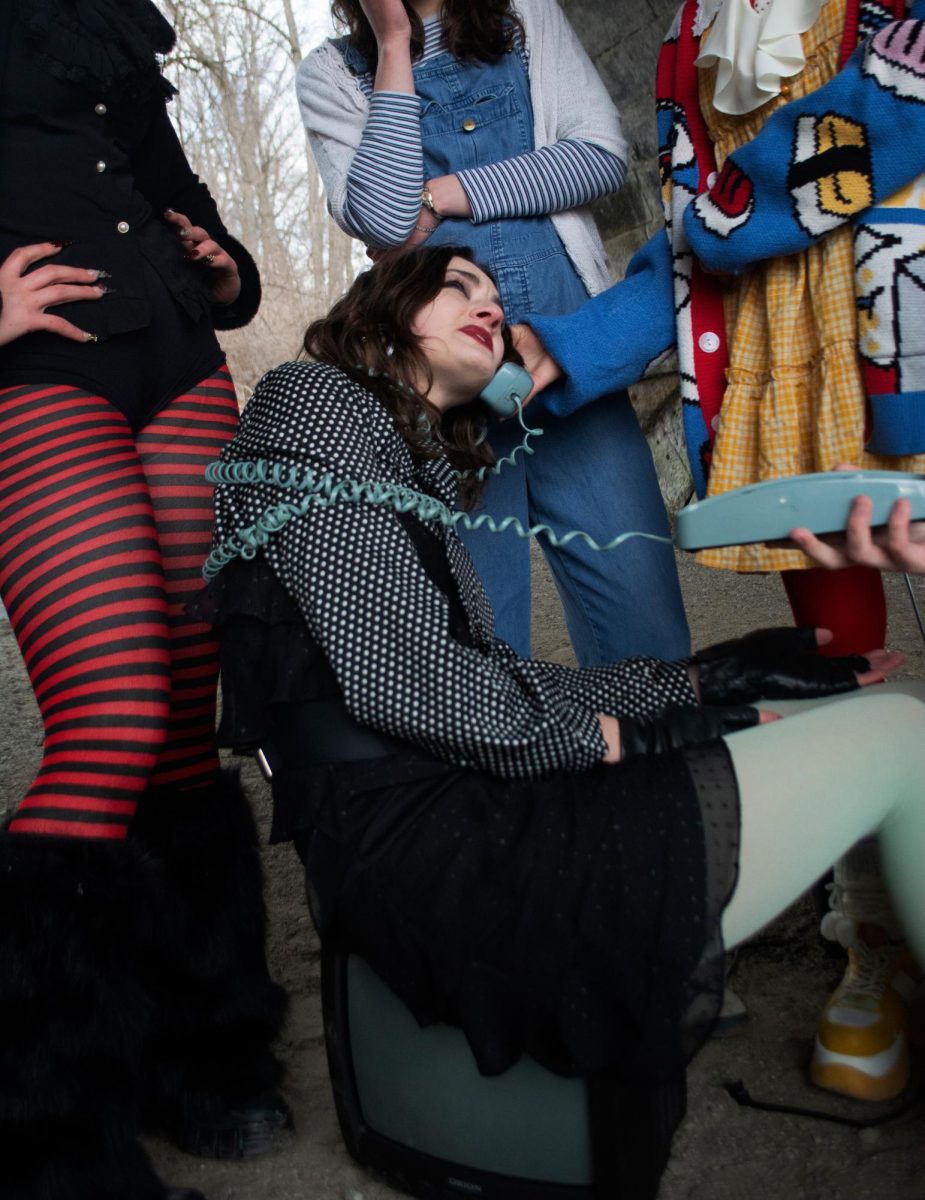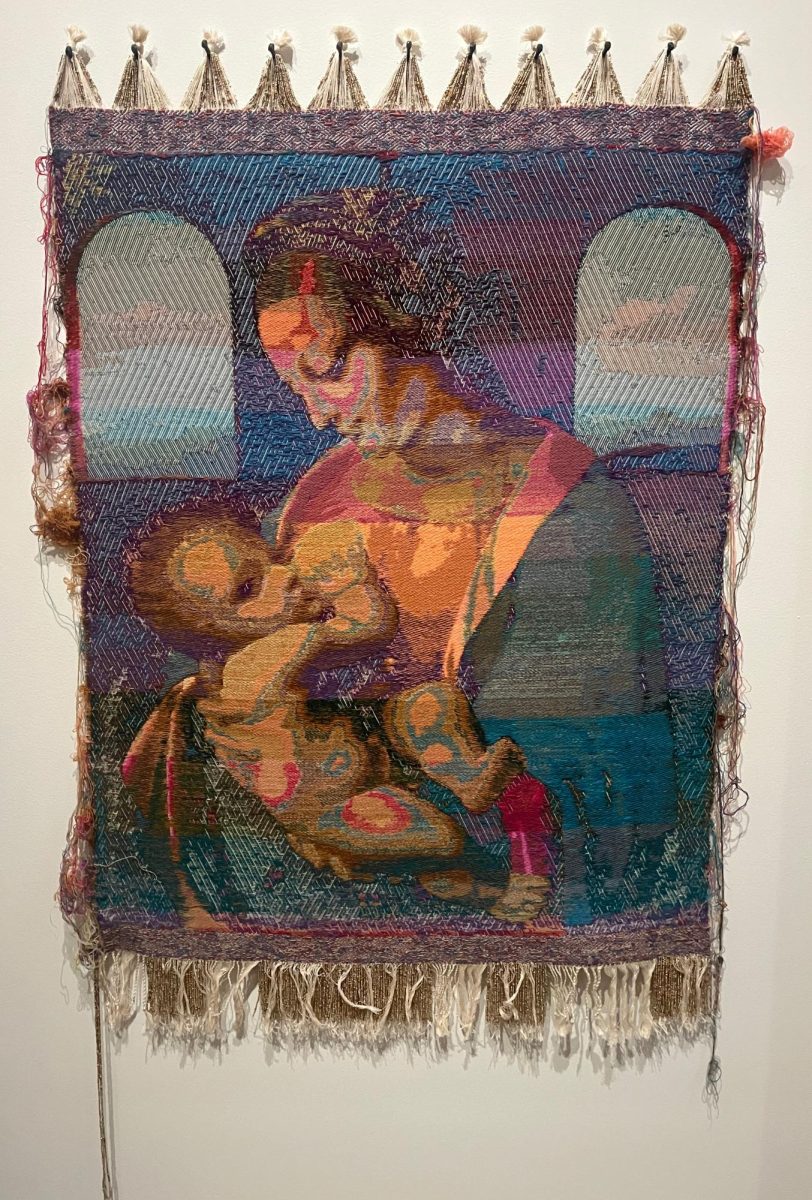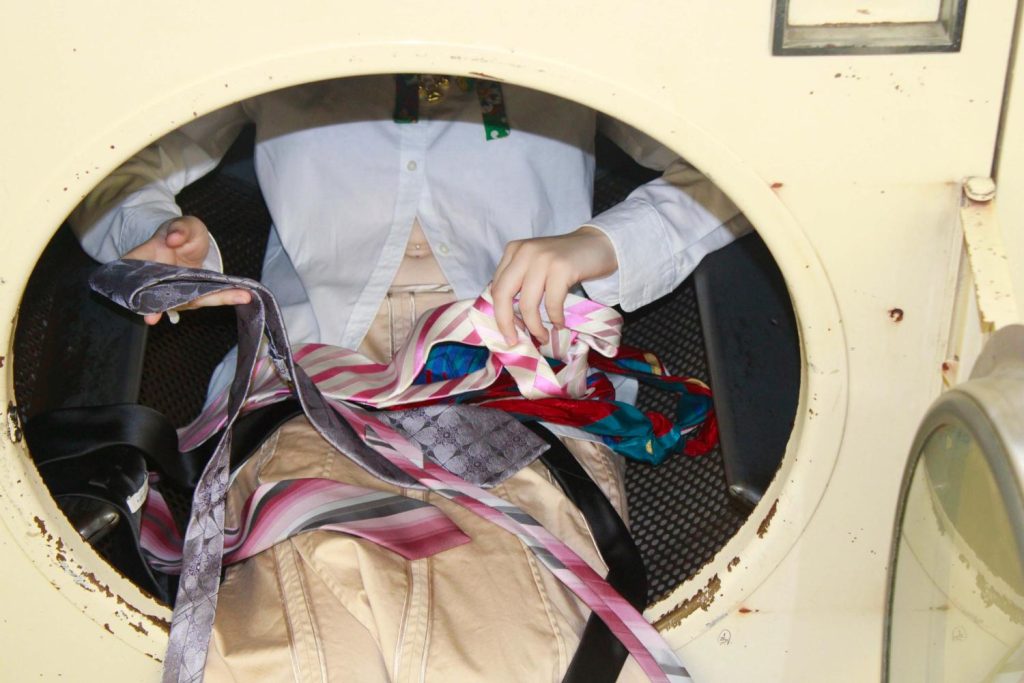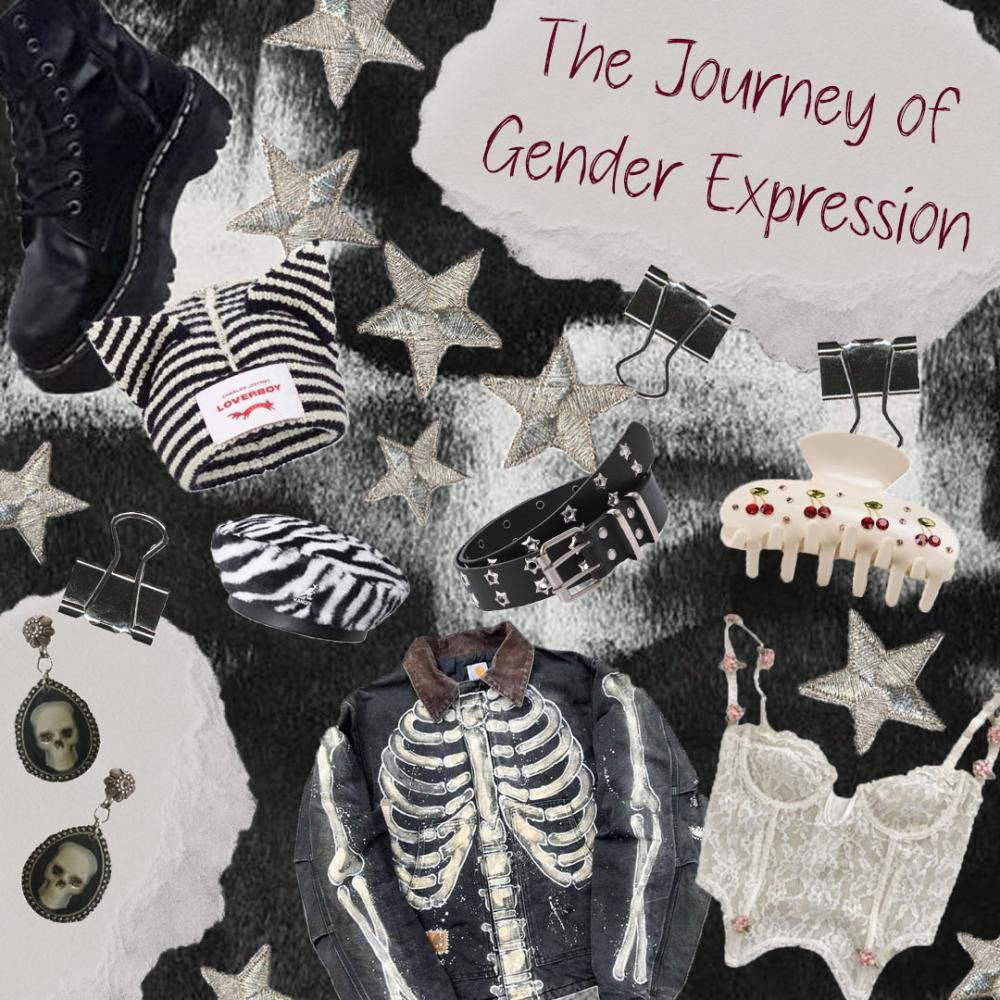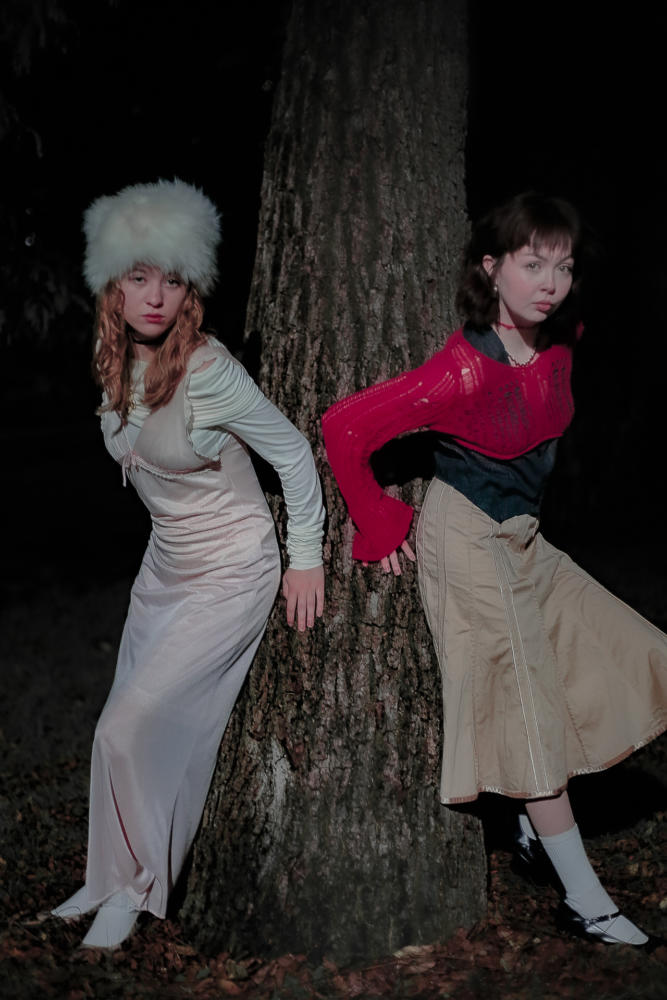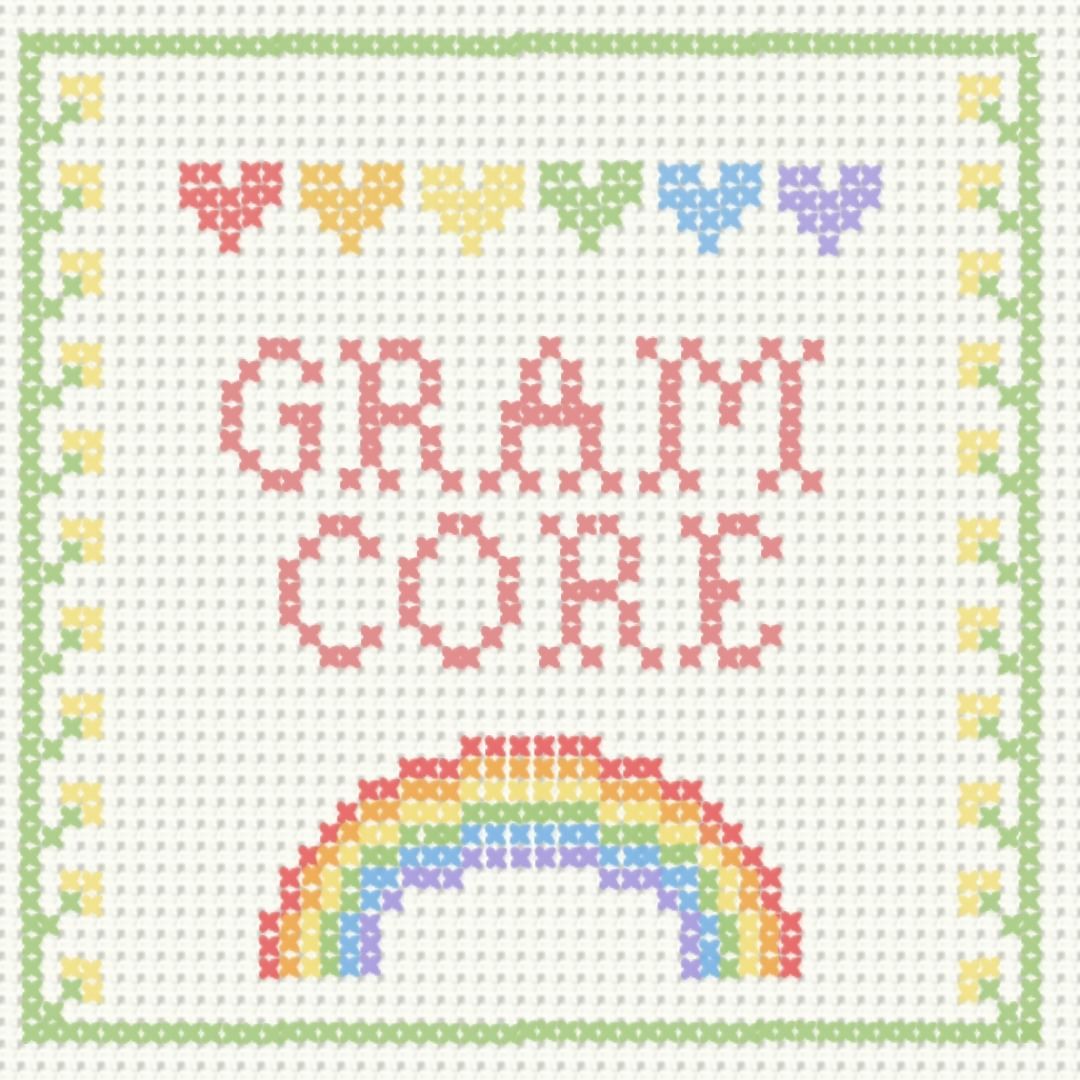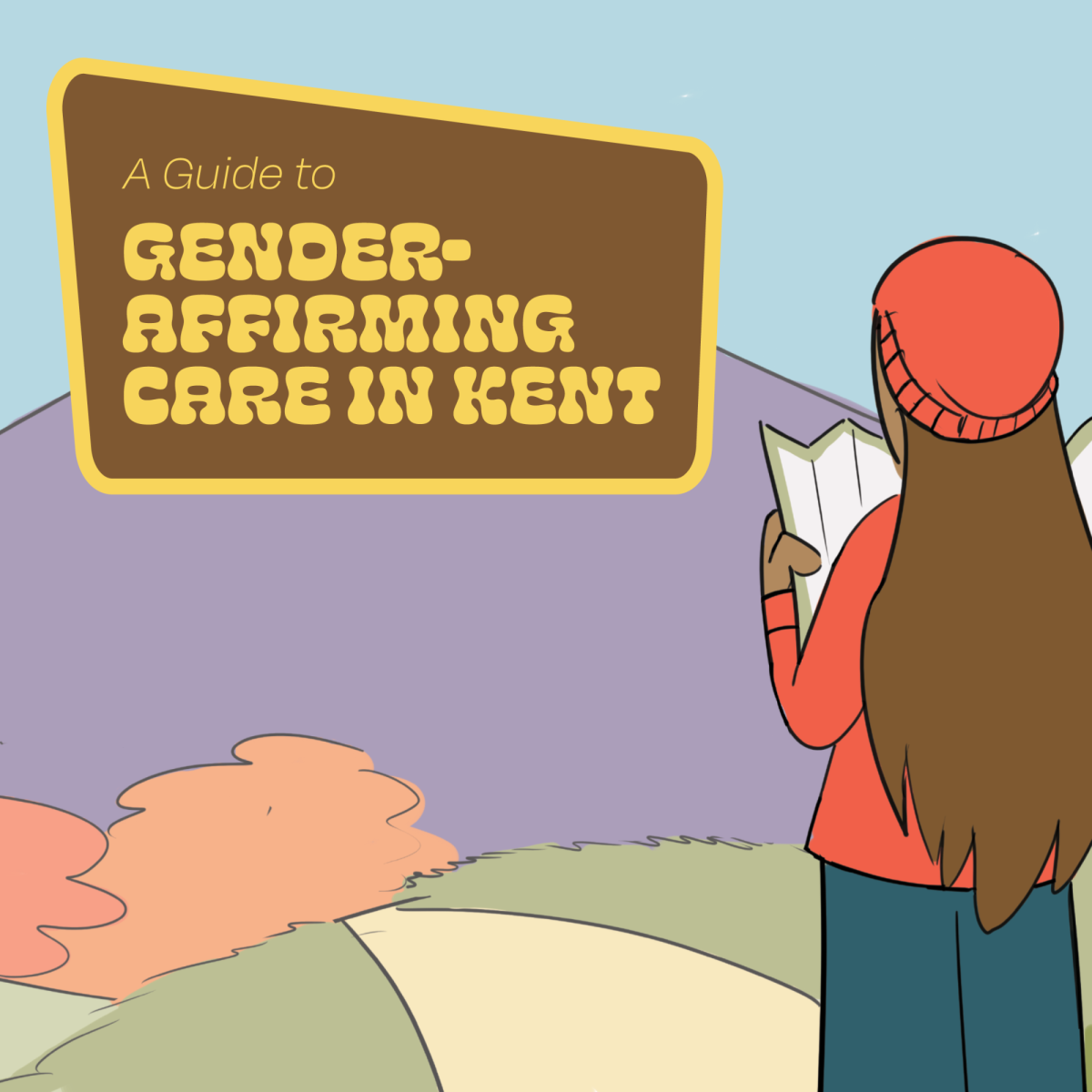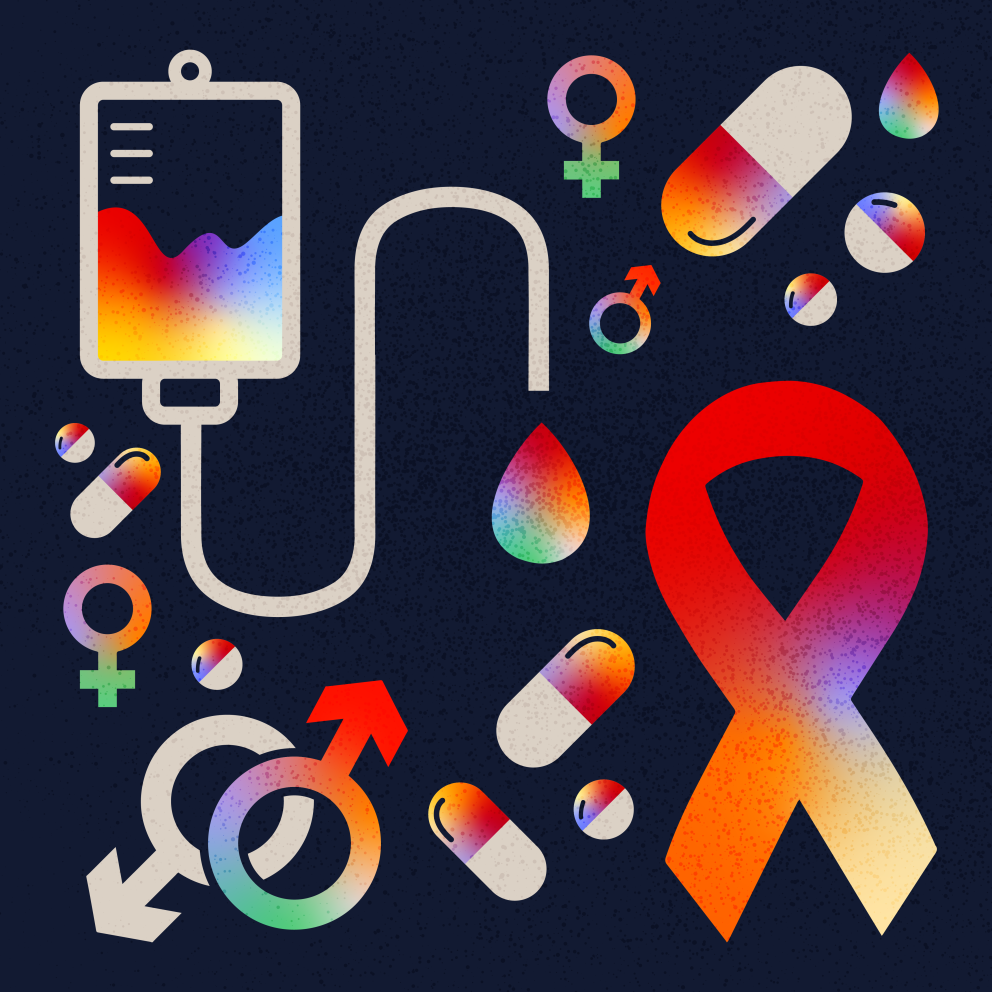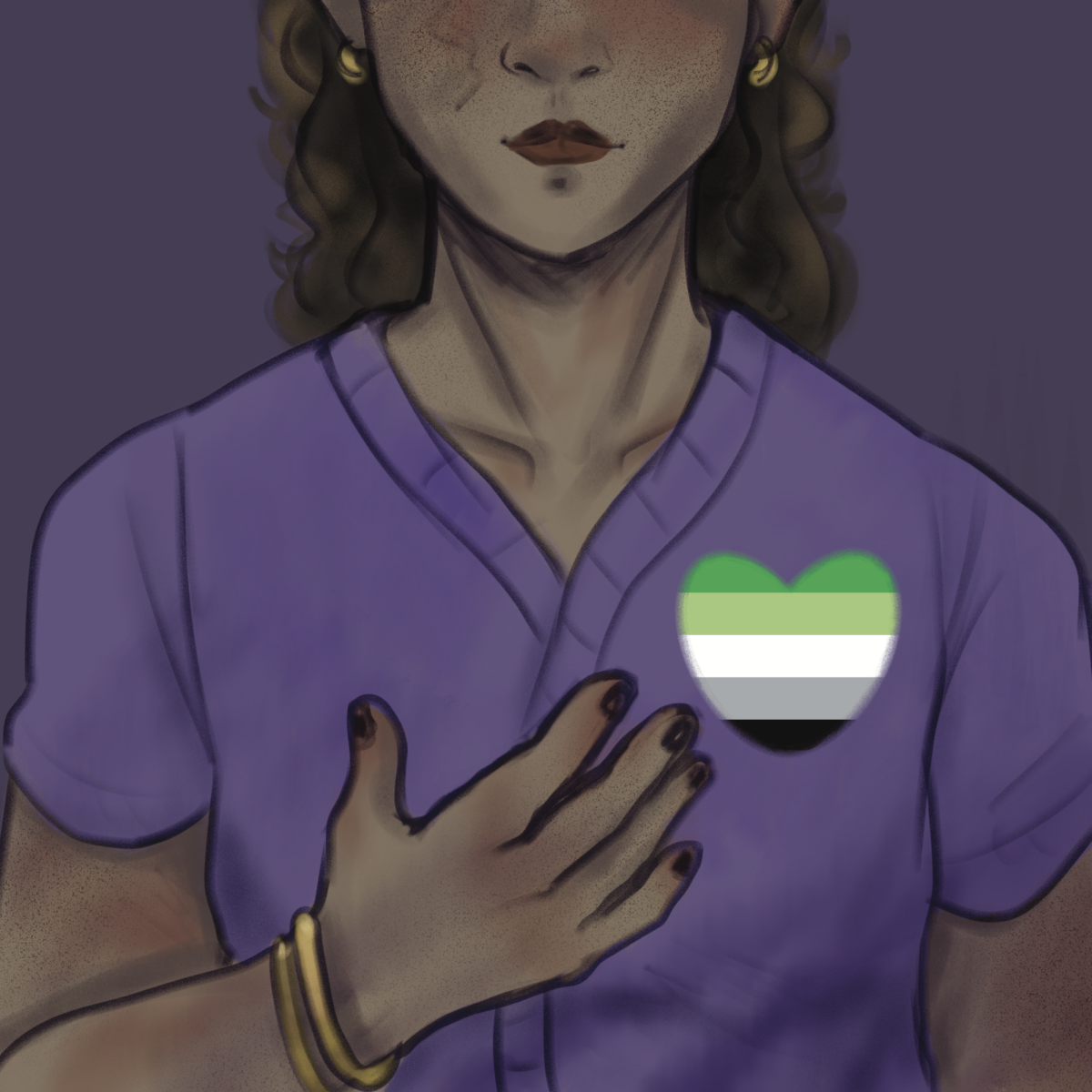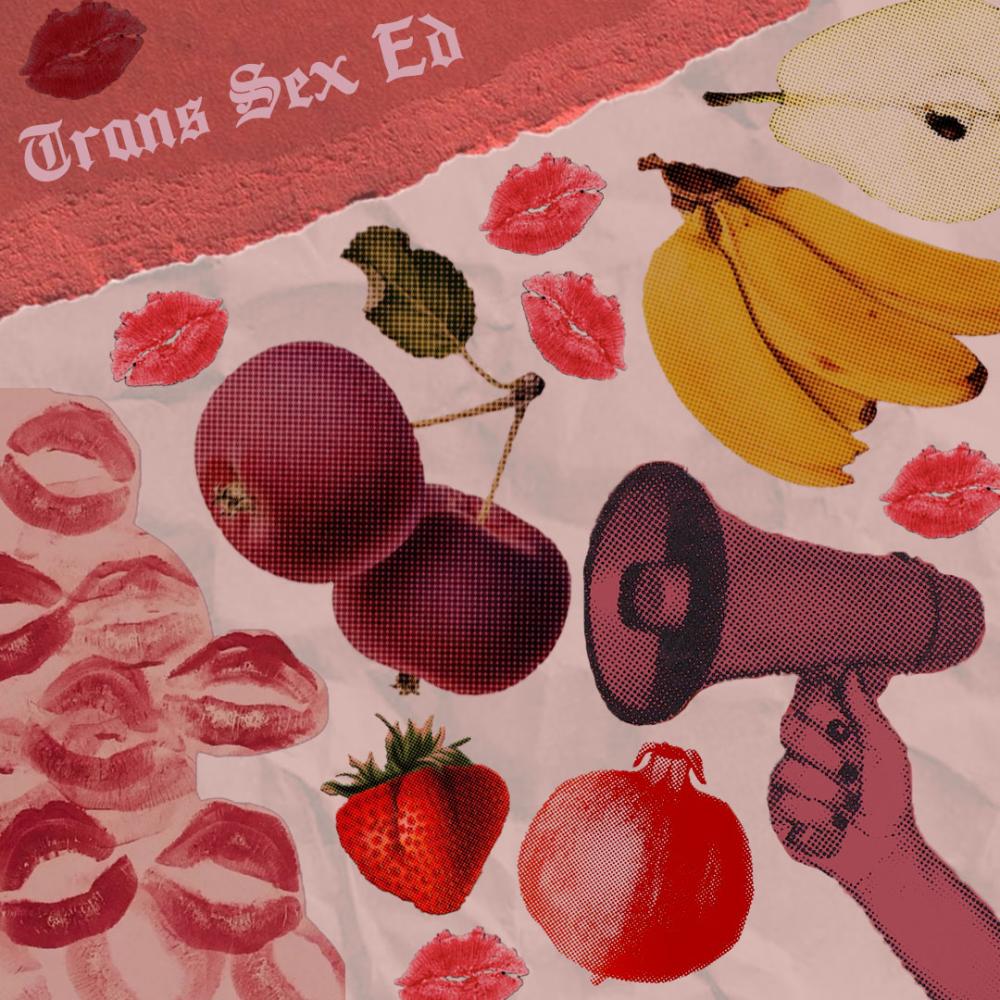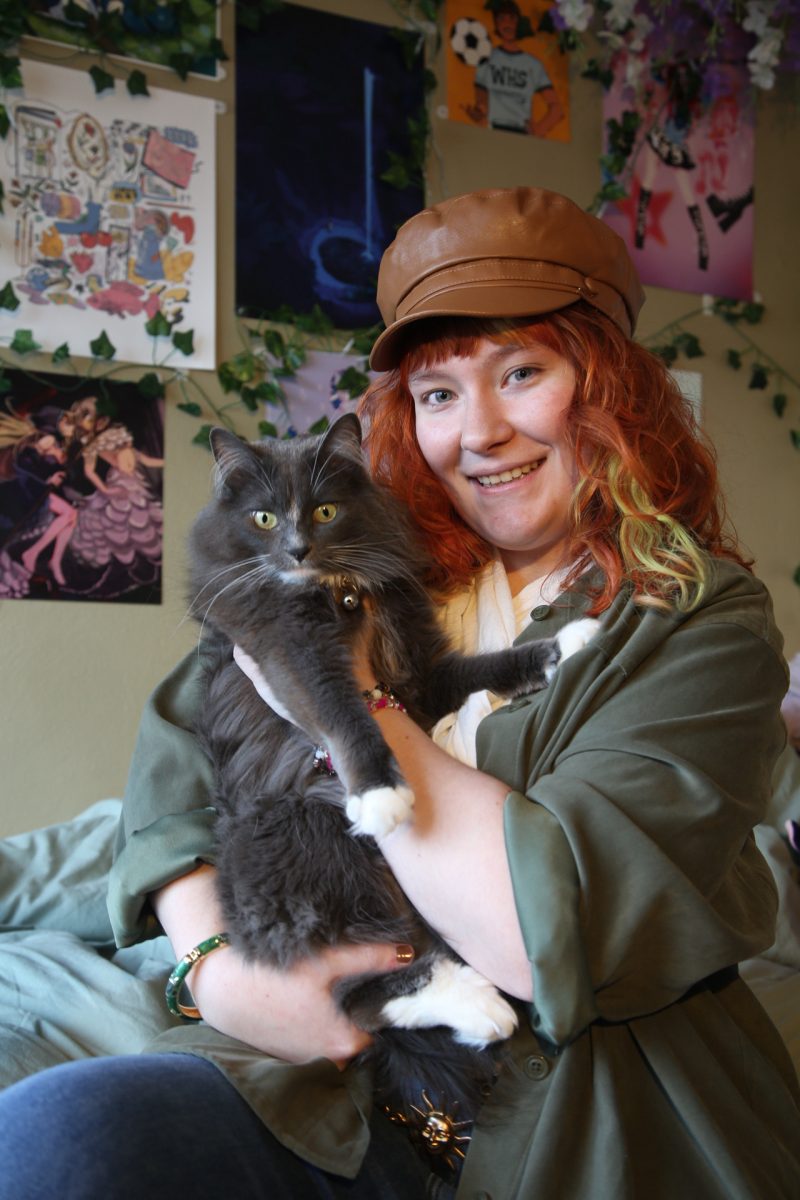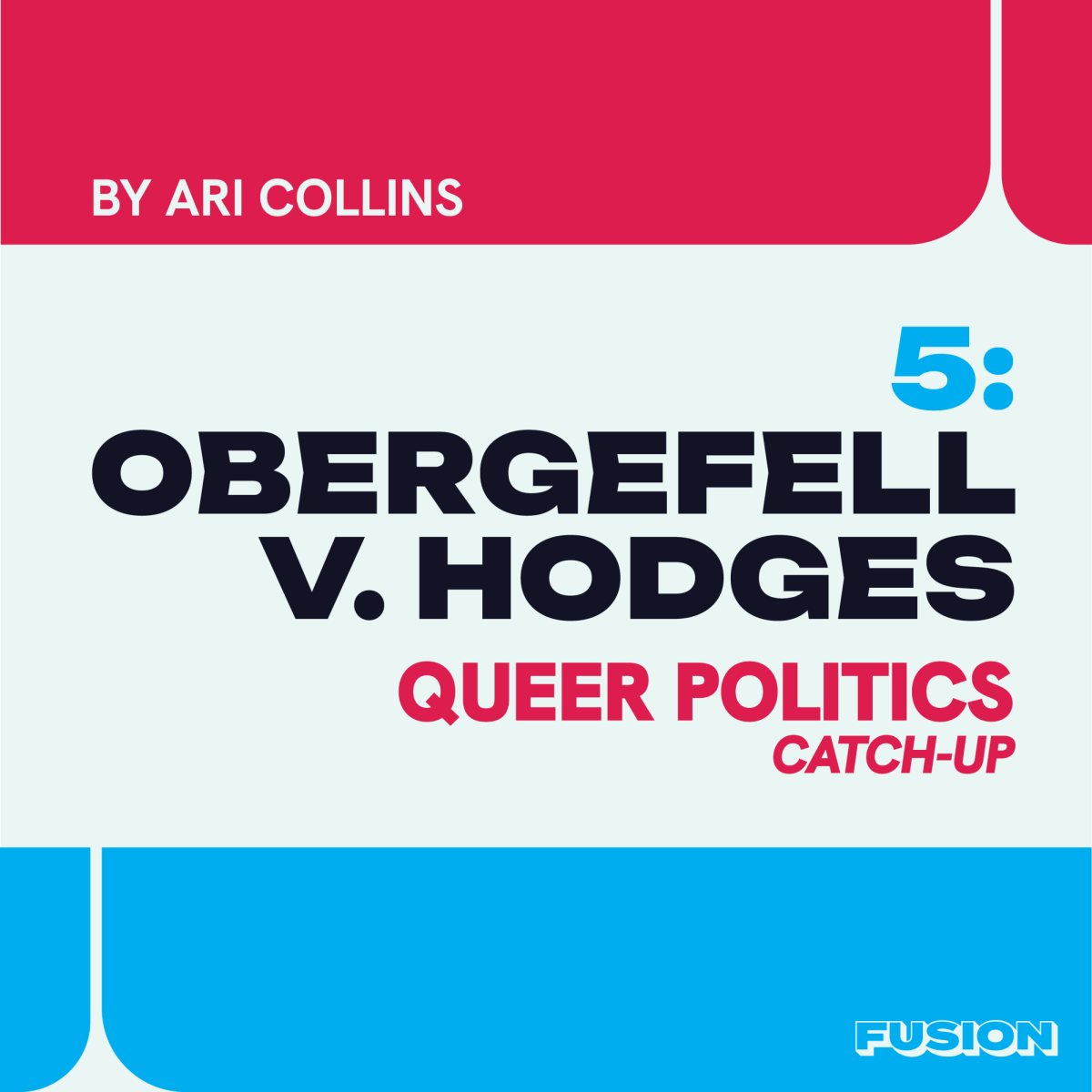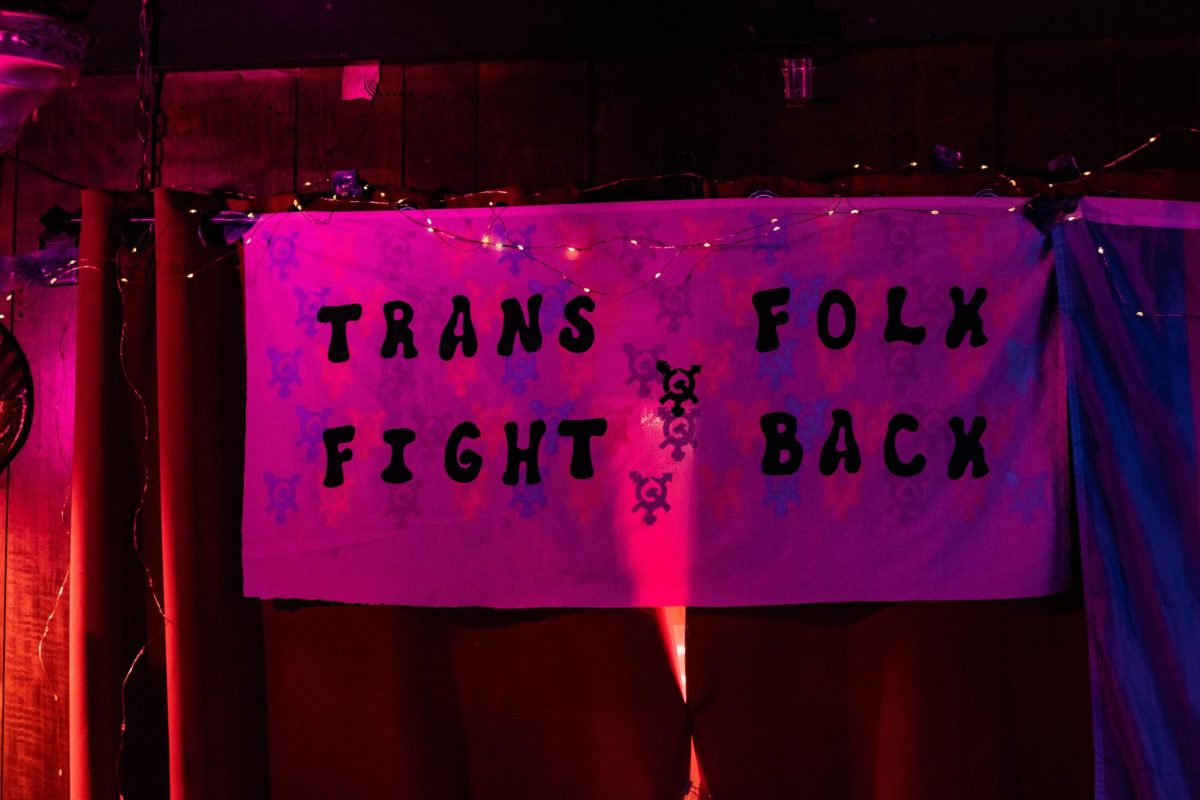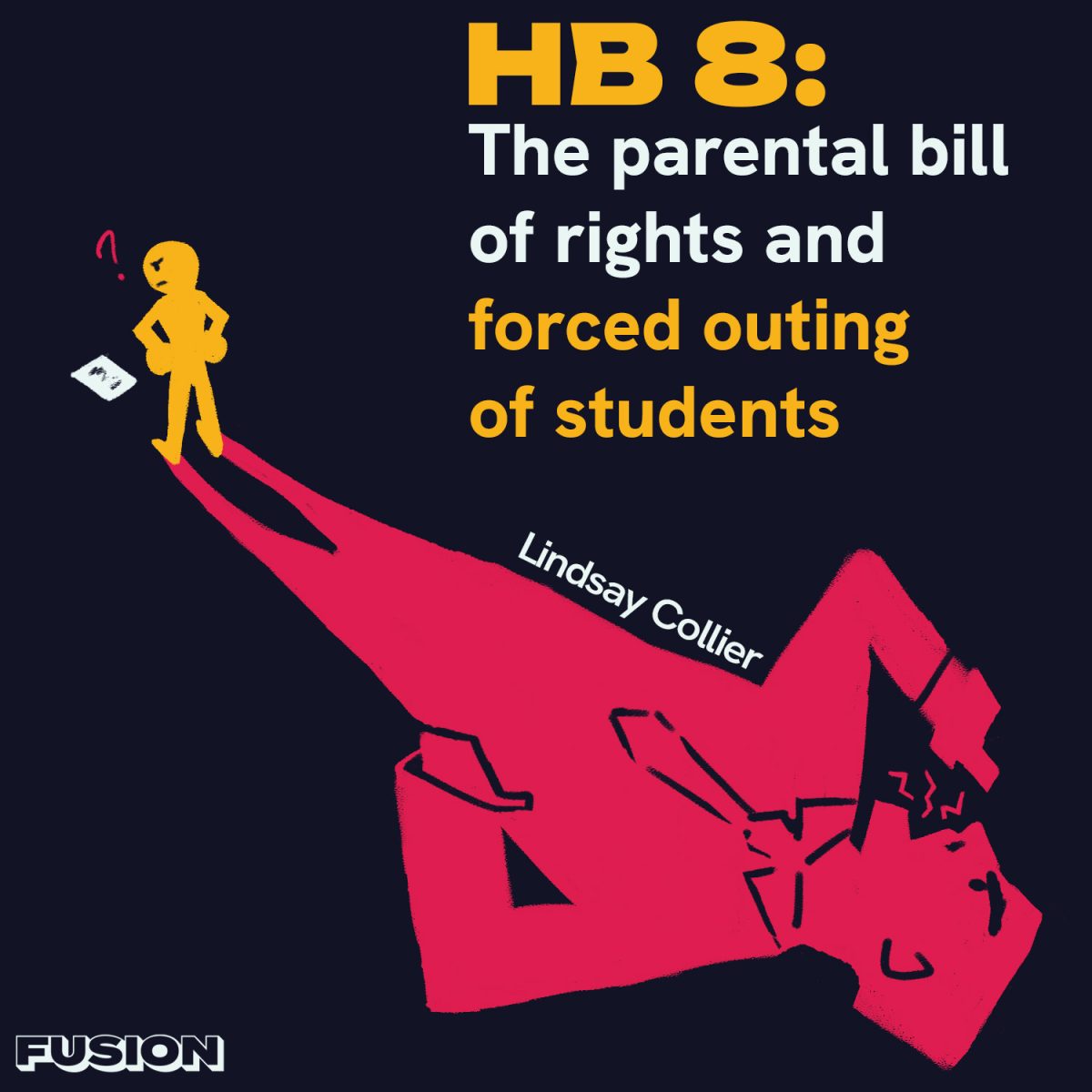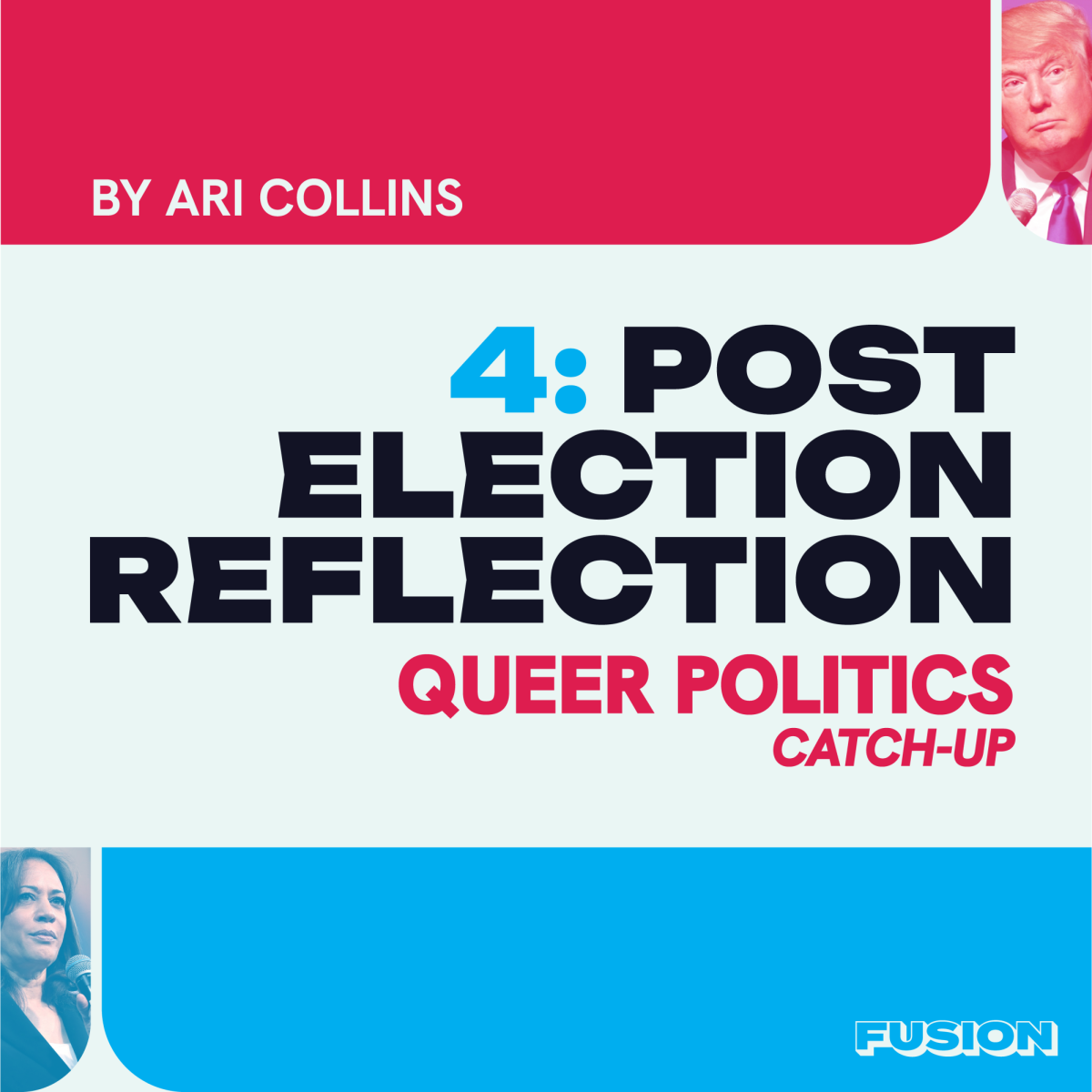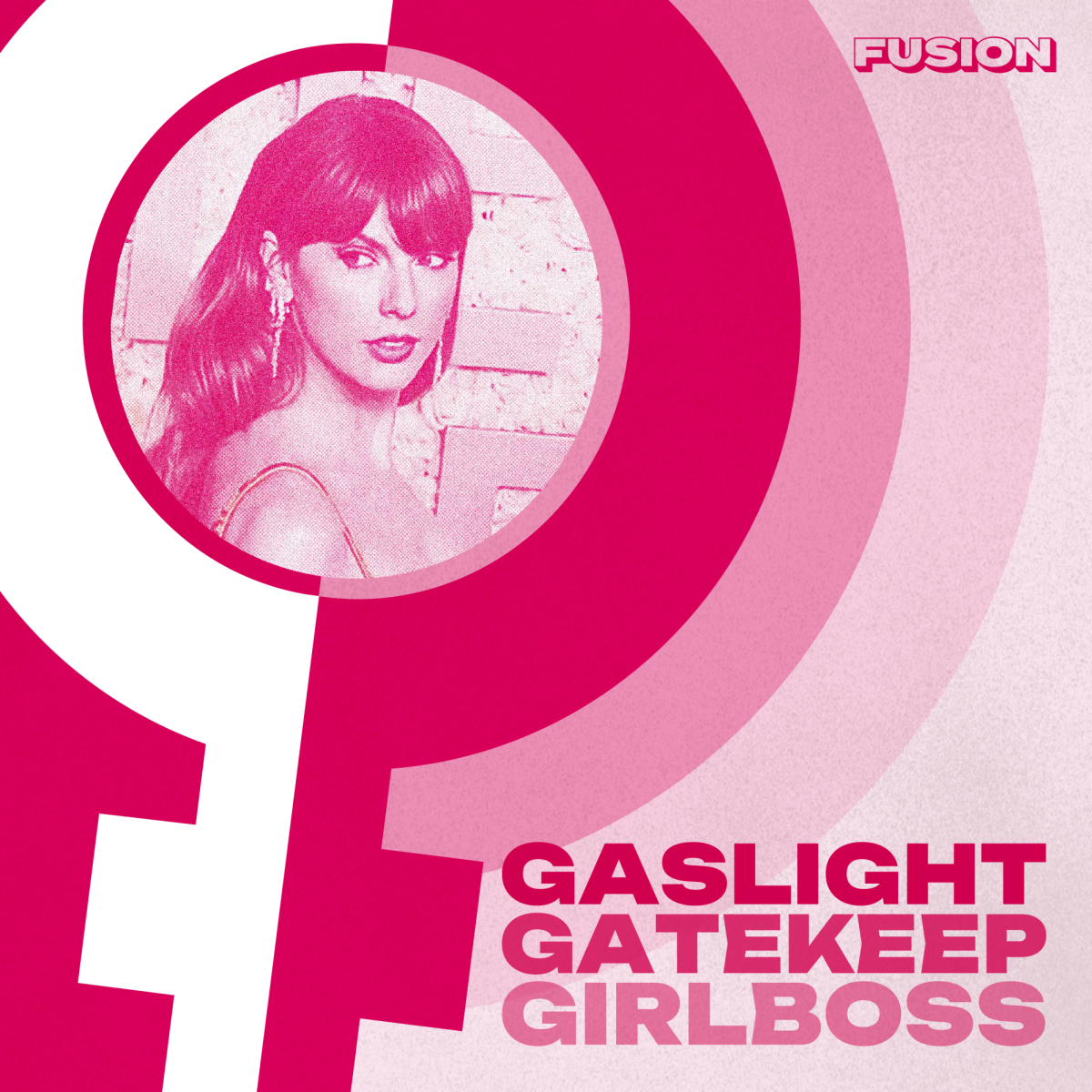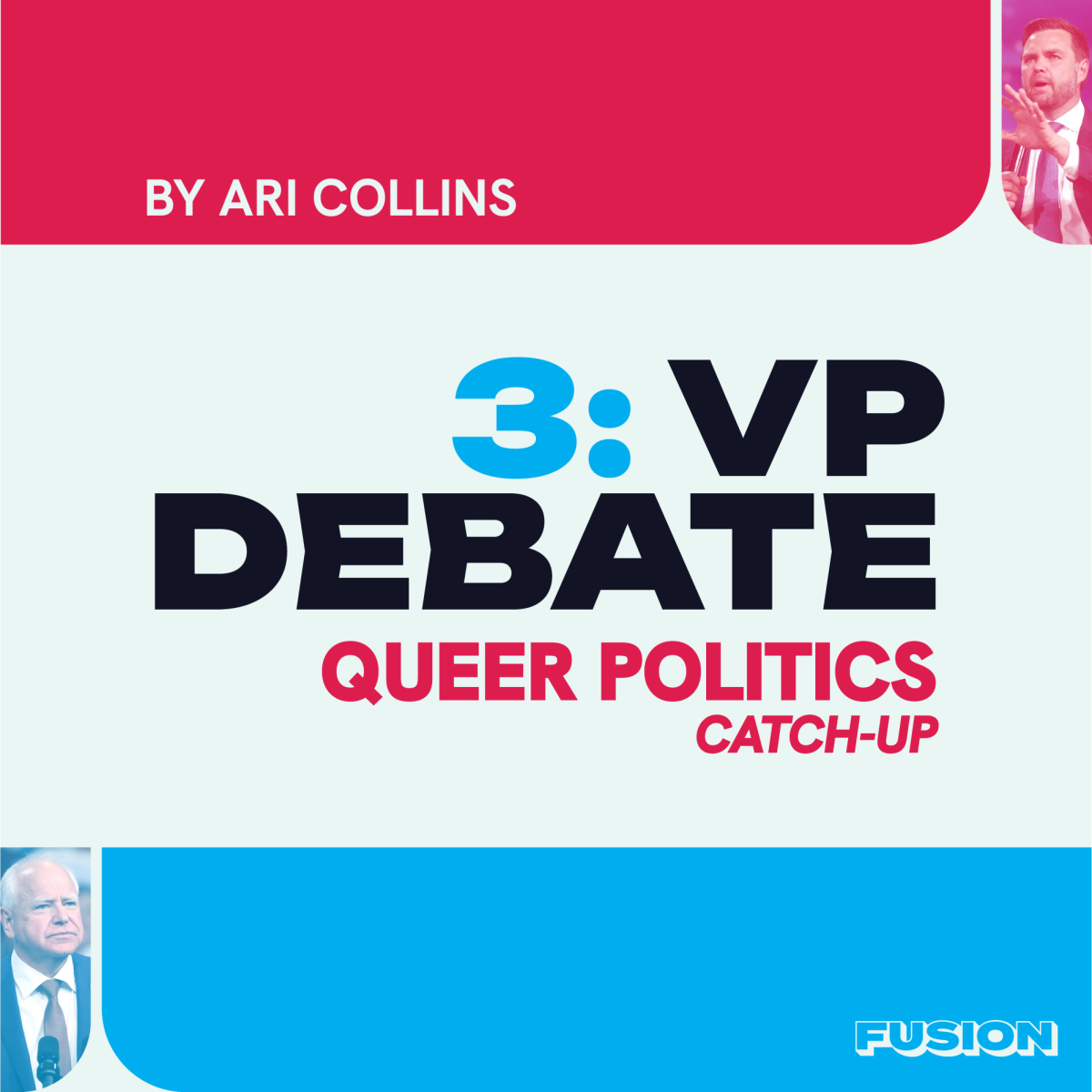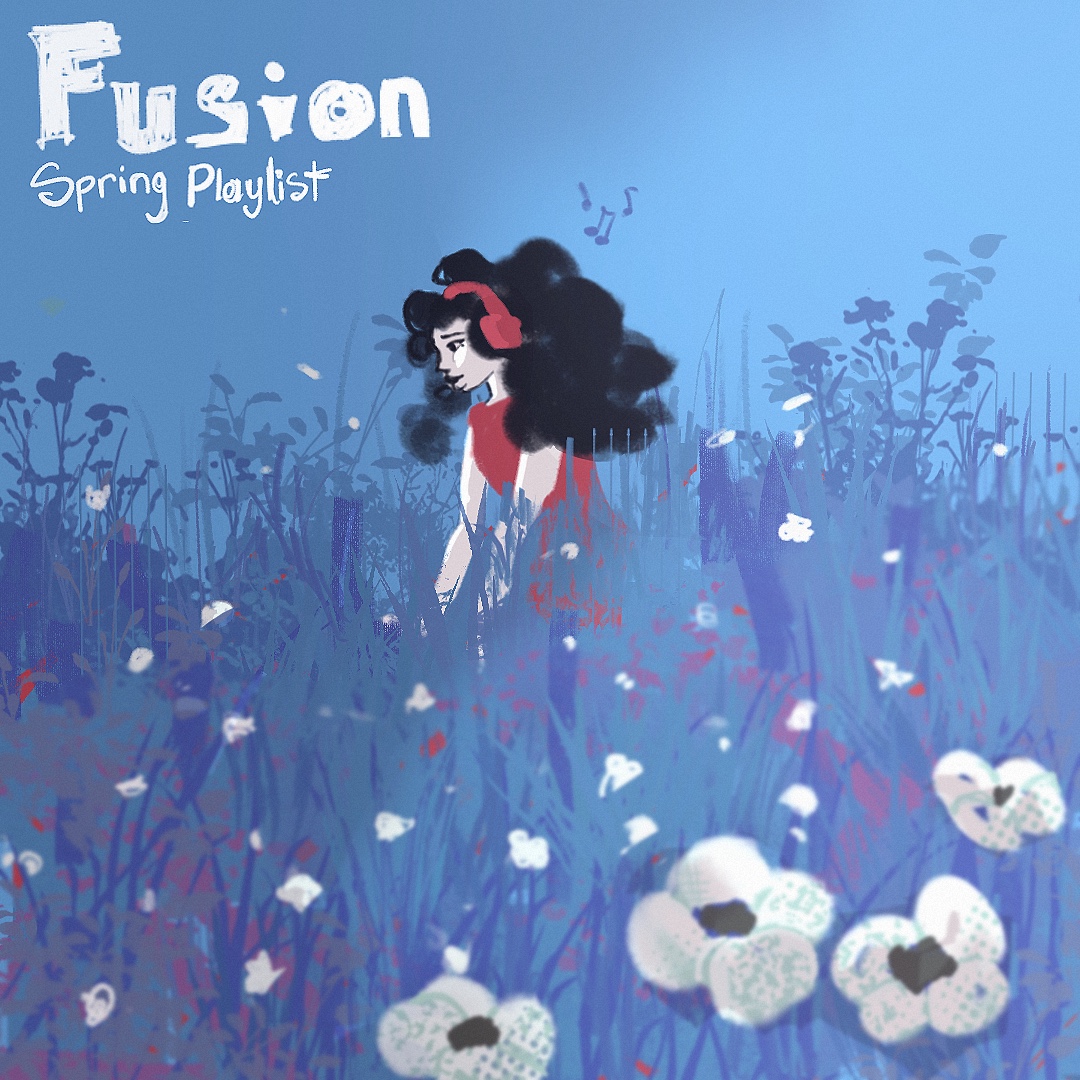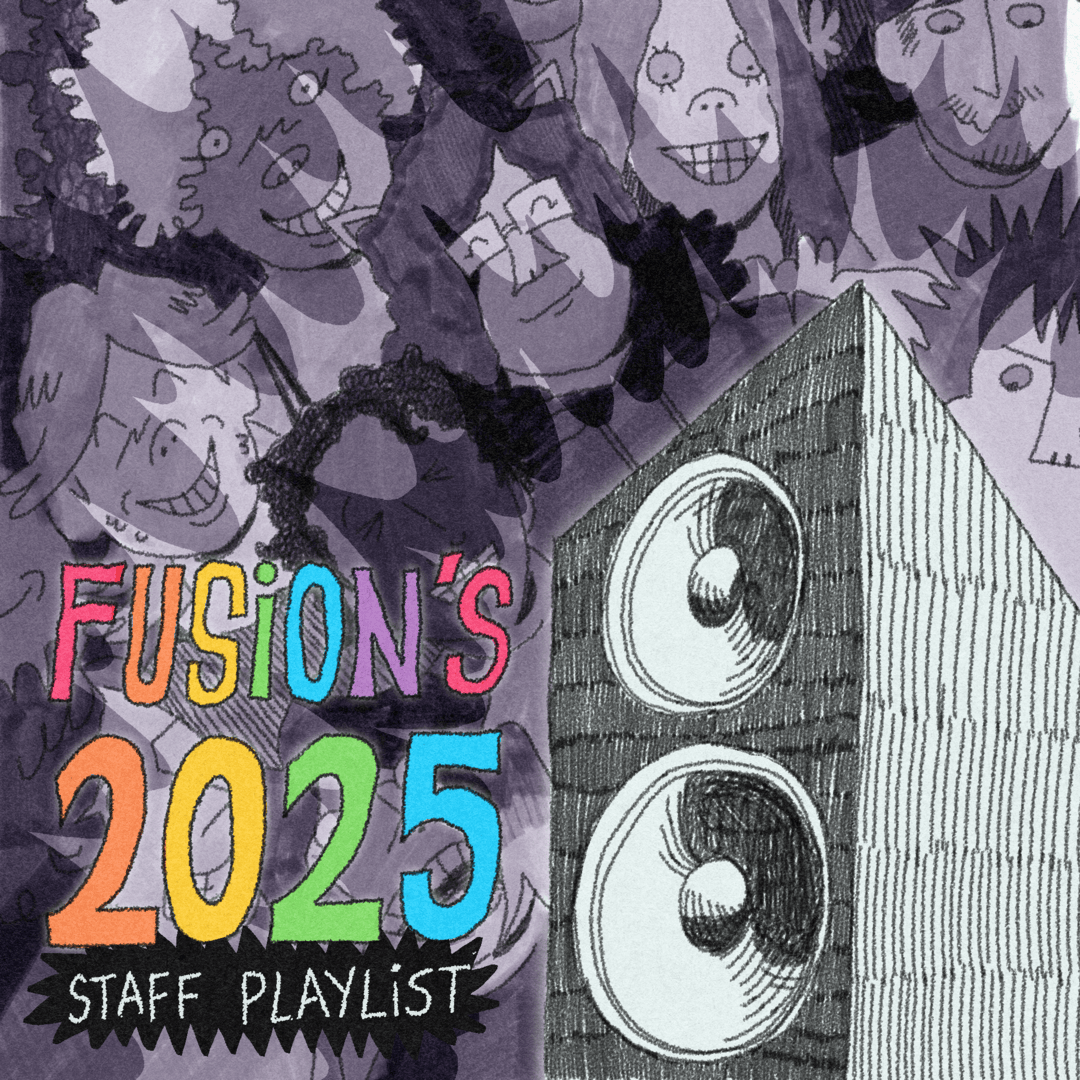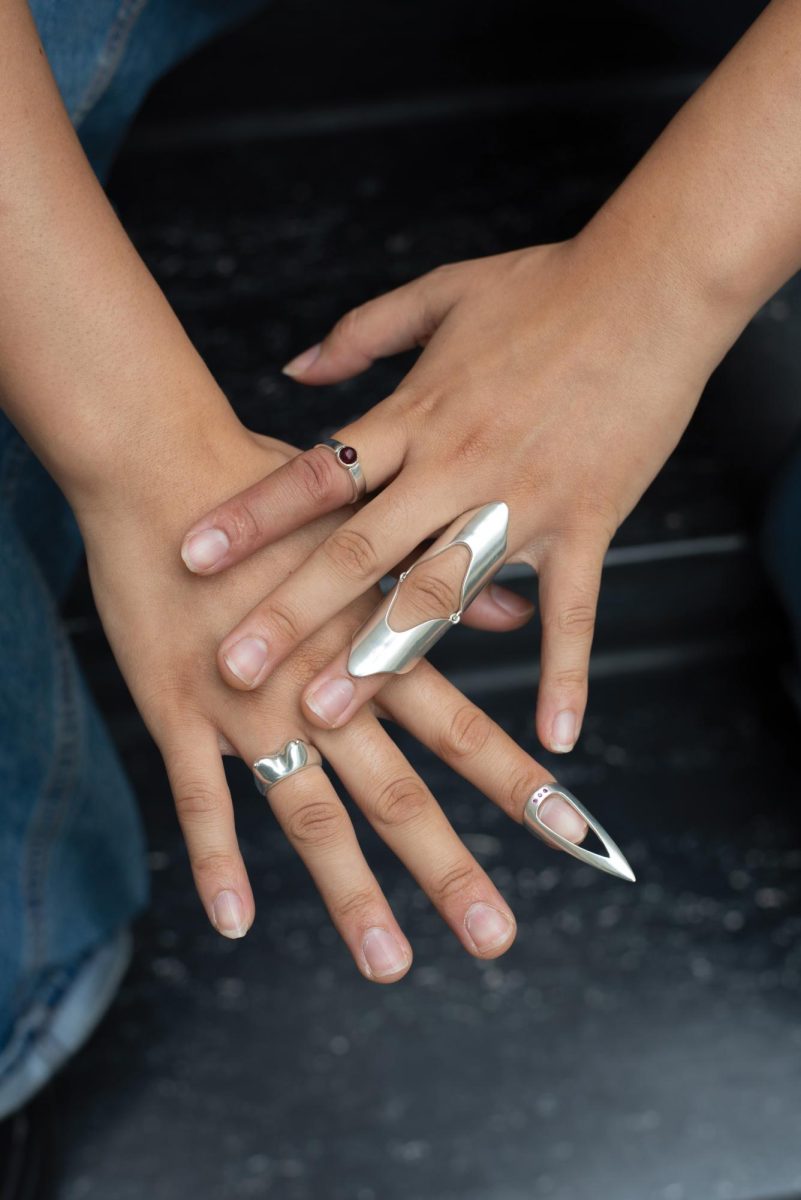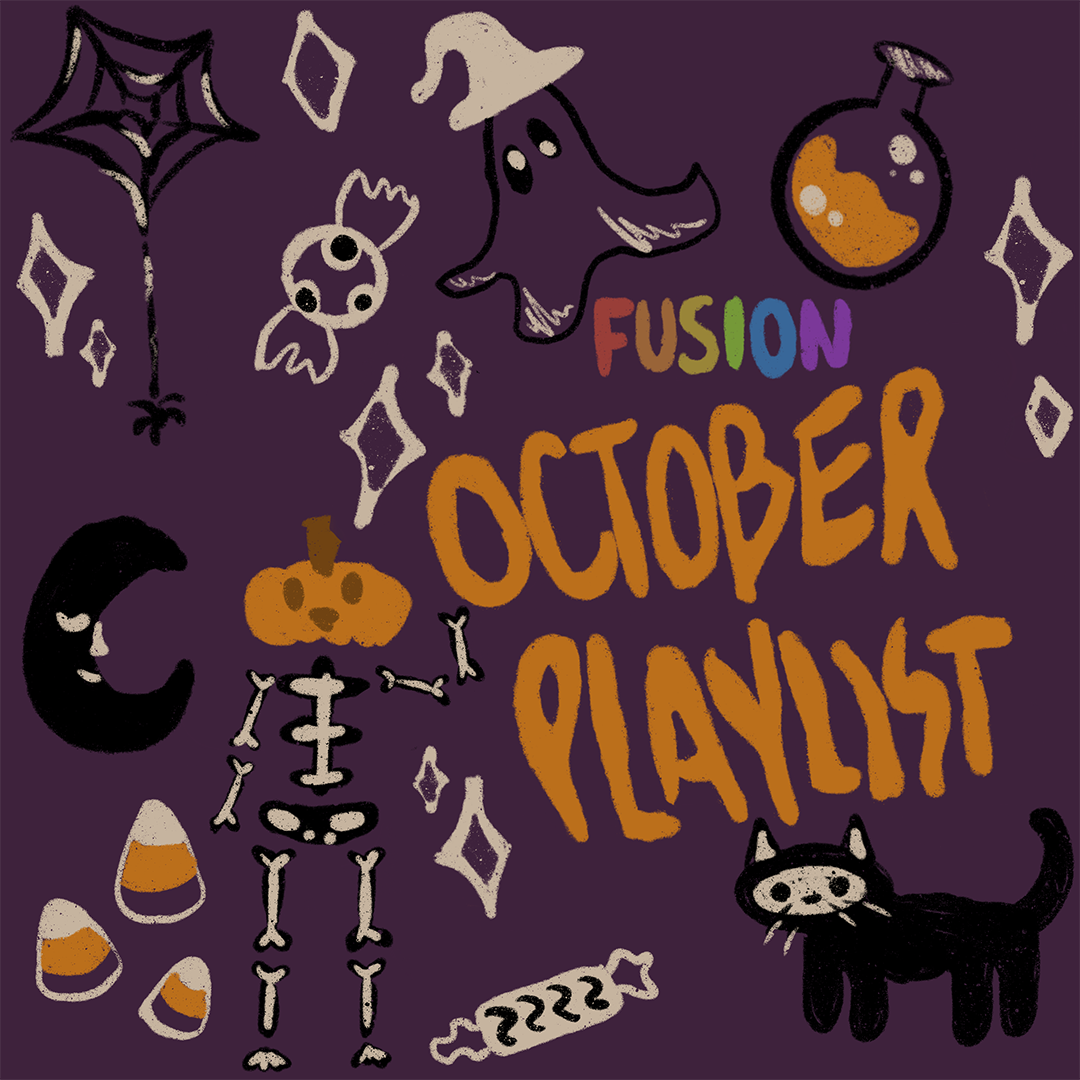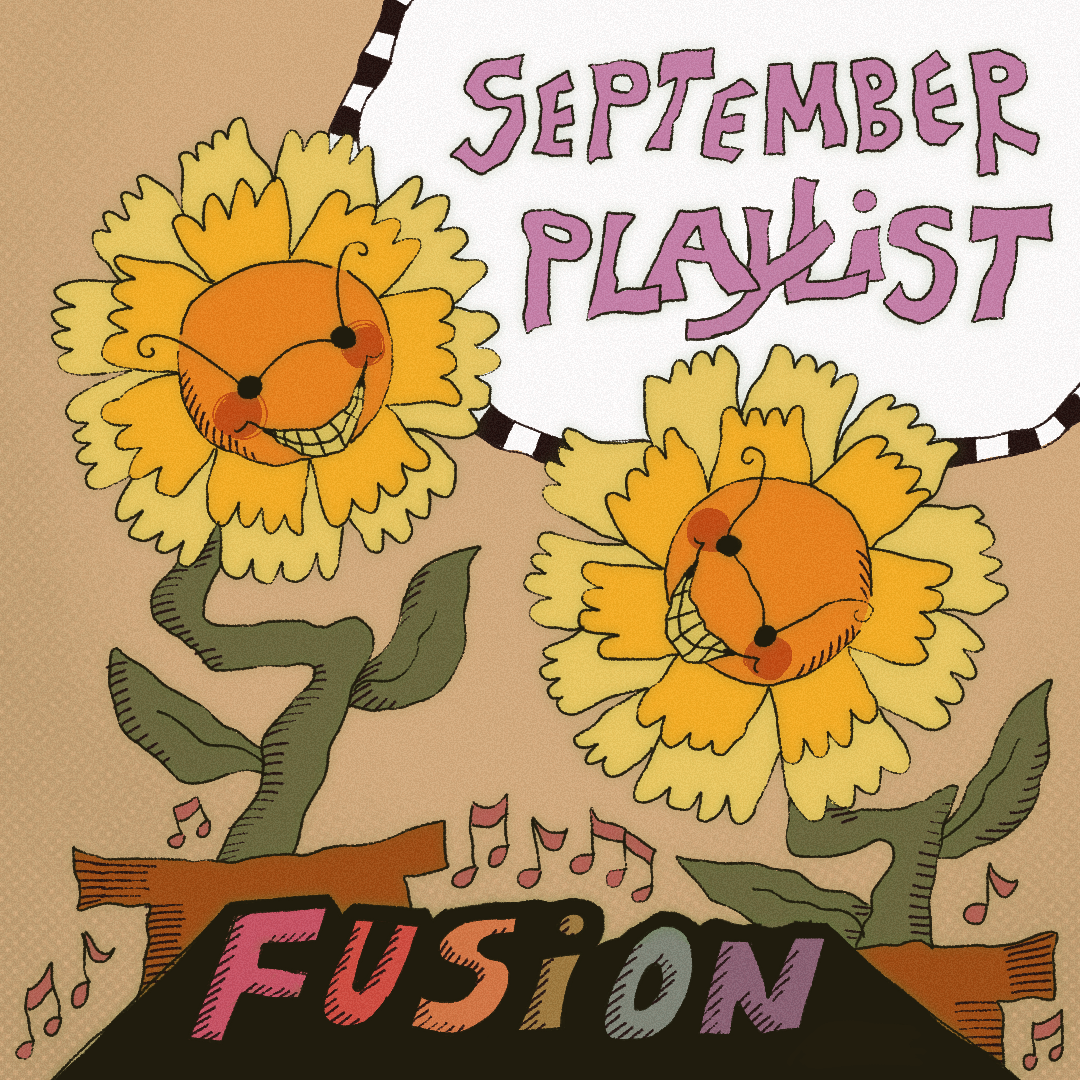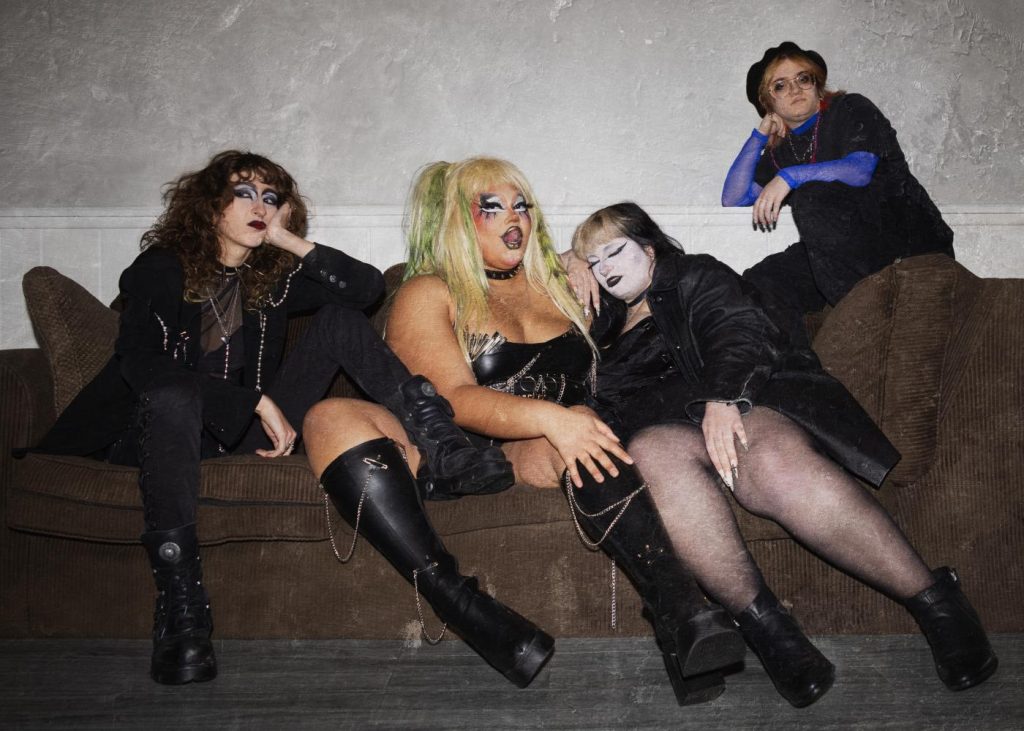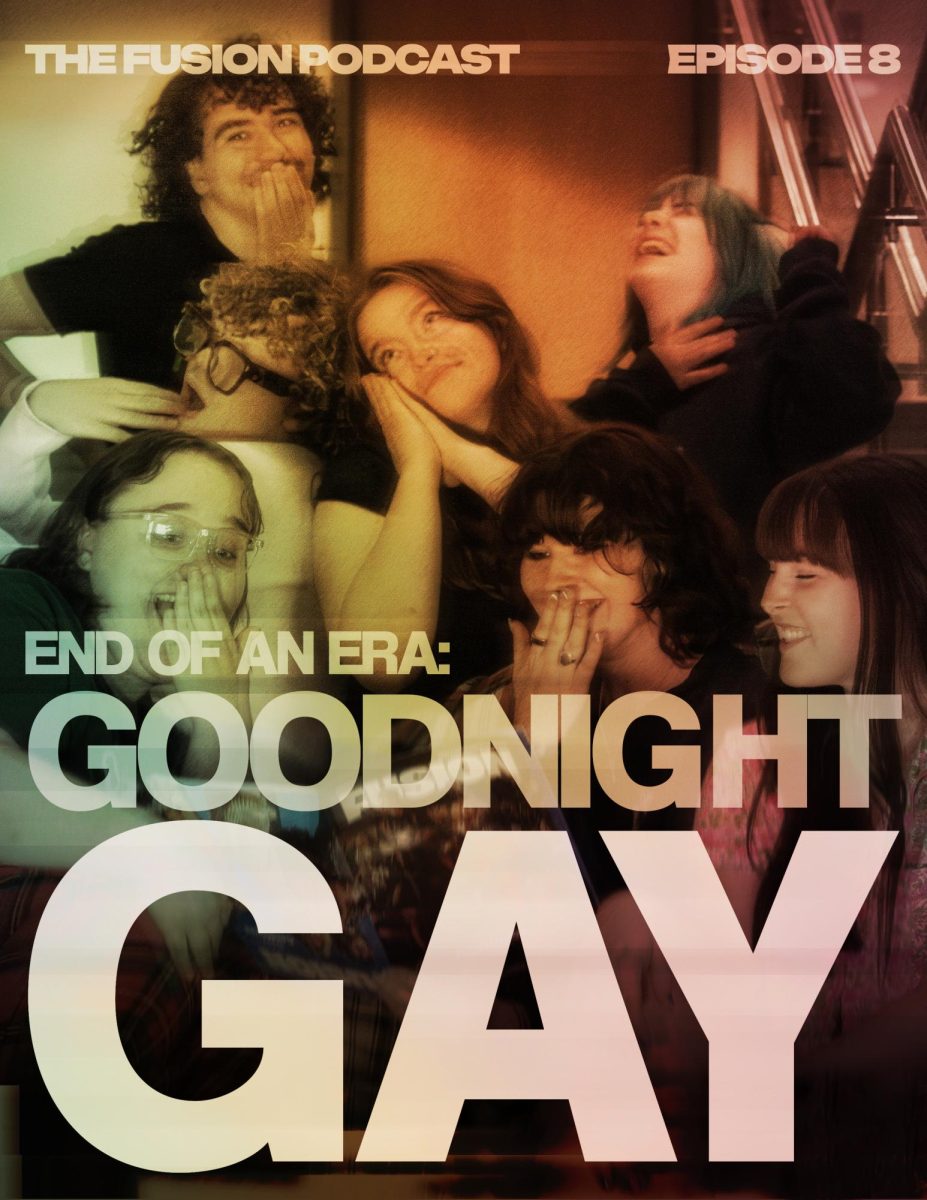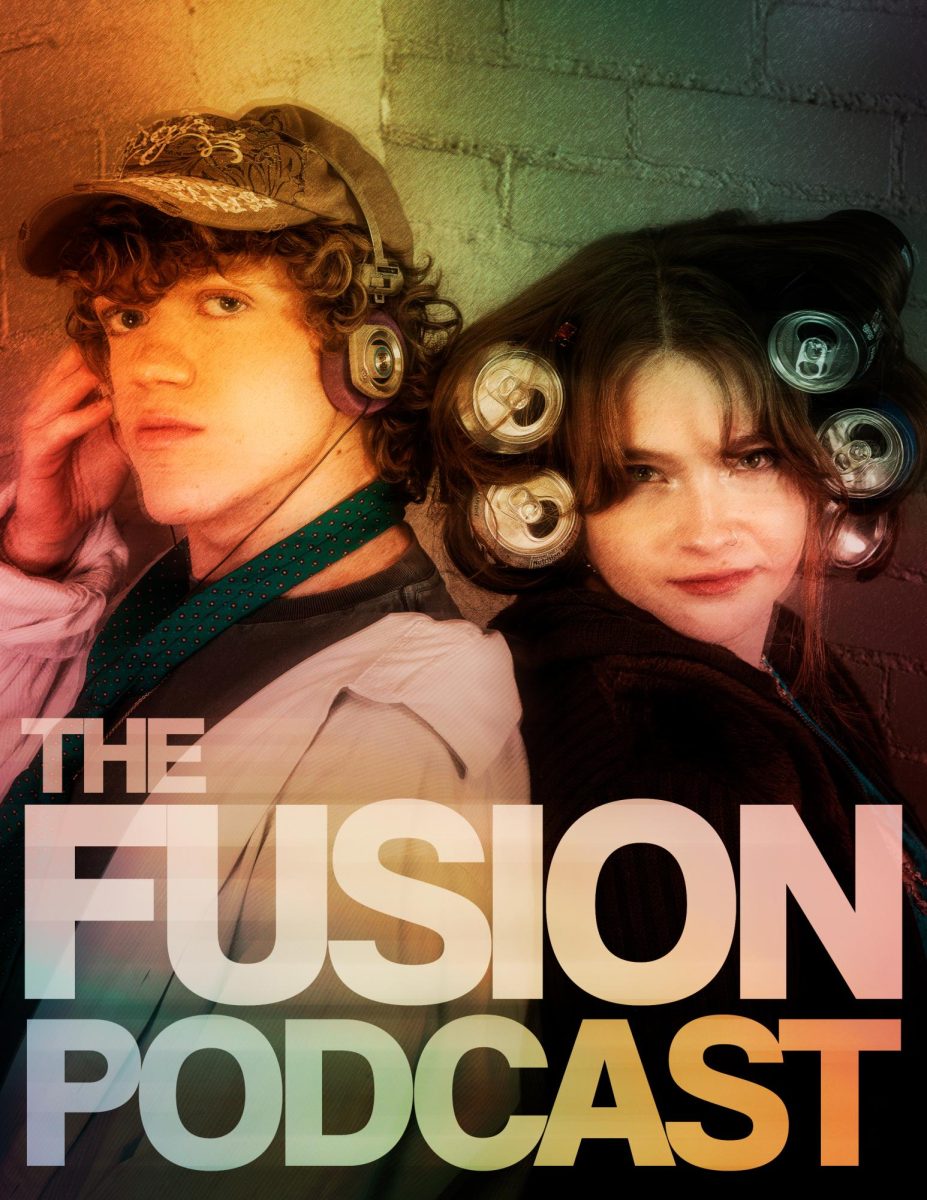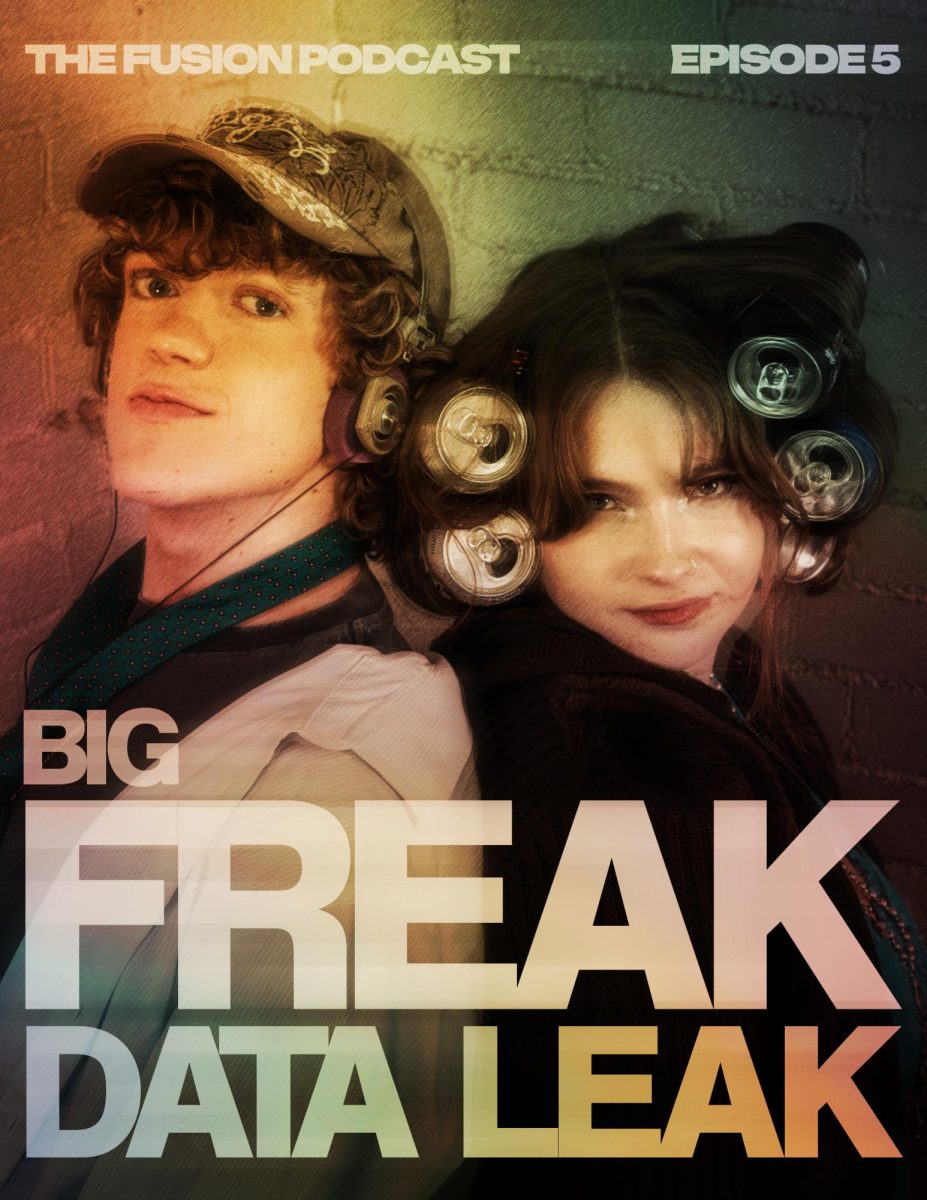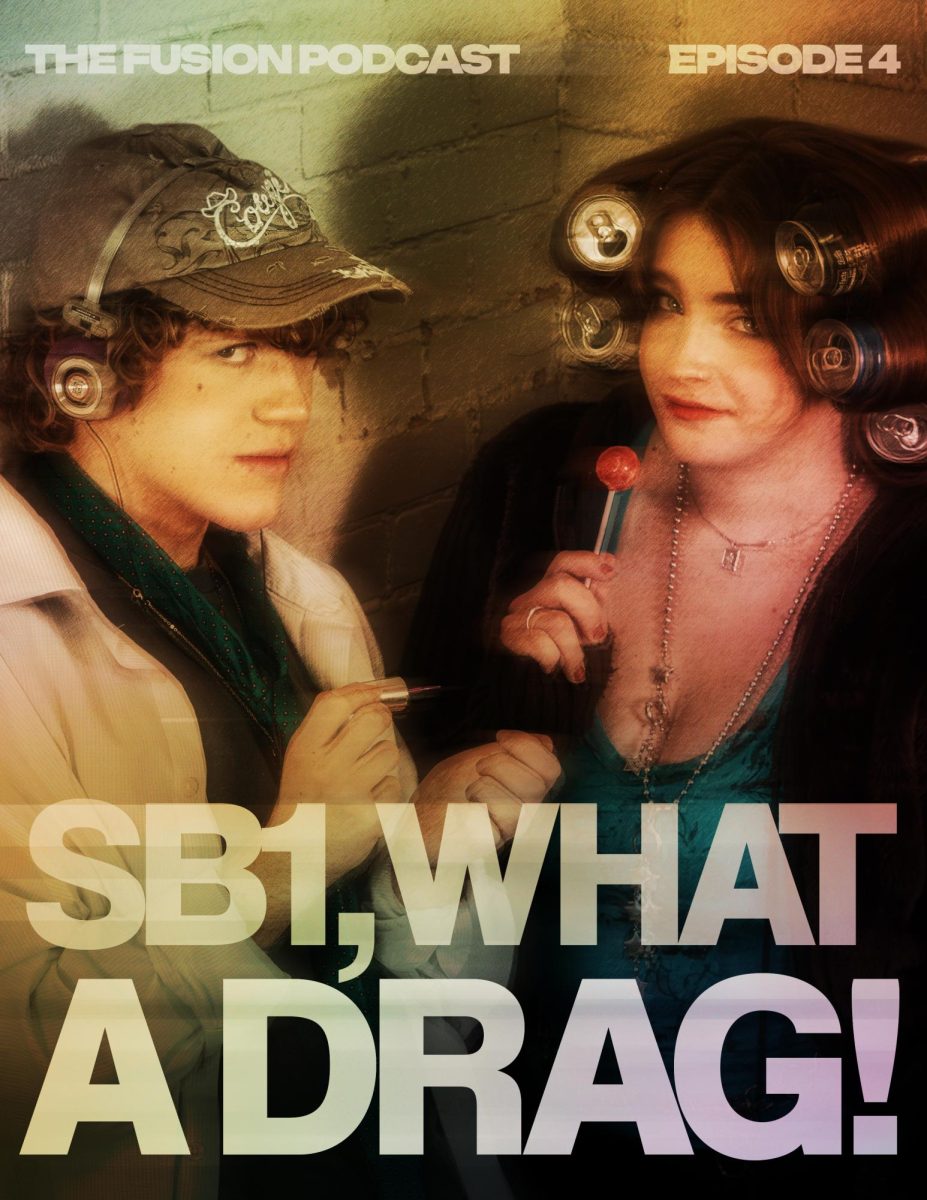Story by Mandolin Arnett and Autumn Pritchard
Textile arts are a great source of expression and creativity within the LGBTQ+ community. Crochet, embroidery, weaving and other soft arts have been an ideal way of communicating social and political ideologies surrounding the queer experience for decades. Through textile art forms, there are historical lineages on how each queer experience came to be conveyed. The textile community welcomes outsiders and those who don’t quite fit in.
In the context of queer experience, textile crafts create a way of expressing both joyful and sorrowful occasions, drawing from past and present. This sets a precedent that queer art cannot be separated from the artist. There is a connection between self, emotion and the time a piece is created that reflects the inner experience; all intertwining together like the threads of cloth to collectively create something entirely unique and irreplicable.
John Paul Morabito, assistant professor and head of the textiles program at Kent State University, said, “all artists have biographies, and all biographies shape work, so even if the content itself is not directly about queerness, it’s shaped by my queer experience, and it’s inextricably bound to that. I can’t not see through a queer lens.”
Textile works by queer individuals do not necessarily have to be directly related to LGBTQ+ aspects for the work to be queer. It is an interconnected concept of self and materialism that cannot be separated because of these histories.
Historically, crafting was a way for gender non-conforming individuals to tailor their garments to fit their identities. The art of drag has been used to embody gender expression through hyper-feminine practices including clothing, which plays into this idea.
“A lot of queer people may well be attracted to that, but there’s a self-sufficiency that comes along with that, doing things yourself,” explained Morabito. “A lot of garments and clothing are not necessarily tailored to our bodies. So if it’s not you, you alter it, you make it your own because it doesn’t exist in the world.” Clothing is intertwined with social aspects of self-exploration for LQBTQ+ individuals, helping find an outlet for encounters with queerness through a more interactive and personal means of creation.
Finding a place to exist and express queerness in a cis-gendered heteronormative society is still a challenge for the LGBTQ+ community because of the failure to include marginalized groups. However, due to movements such as women’s rights, queer artists found a space in textile domesticity through the shared marginality in textiles and craft outside of the home.
In the United States, prior to the feminist movements of the 1970s, there was a socially constructed idea that textile and fiber arts were inherently feminine practices. Women artists of this period began to use textiles as an art form to gain more recognition, critiquing the binaries that existed between what was fine art, or craft and the correlation between gender. One of the first shows dedicated to this was The Great American Lesbian Art Show, which took place in 1980 in Los Angeles. The exhibition was focused on showcasing lesbian artists and featured textile pieces detailing the intersection of feminism with gender and sexuality expression.
John Fifield-Perez, a textiles graduate student at Kent State University, said “It’s impossible not to make political art just by nature of making things from a perspective of a marginalized community.”
Multi-practice artist, Harmony Hammond, who was a leading lesbian activist in New York City during the 1970s displayed a piece of work called, Hunker Time, in the exhibition. The piece consisted of discarded textiles from queer friends and the SoHo district, wrapped around ladder-like structures. It was meant to represent communities of queer and transgender women, ready to take action together.
Morabito pointed out that aspects of textile arts, like weaving, are not always portrayed as feminine. “When we move outside of the upper middle class to wealthy, white spaces; that gender situation really shifts. So if you go into West Africa, they [weavers] are men. The same thing in India, it’s a many gendered practice. So in the United States and in the West, the leisure activity of textile making is gendered.”
John Paradiso, the lead art consultant of Landex Development, LLC., and queer textiles artist, stated, “domesticity has a part to do with it. It reminds me of my grandparents, and doing stuff by hand is really important to me. I think that craft is family oriented – and a lot of queer people wanting to belong to family might have to do with it.”
Textile arts have strong emotional ties as well. Morabito said, “I think that’s very queer to think about, that space where pain and elation happen kind of simultaneously. And that’s like our joy becomes political resistance, but that sorrow can’t be unbound from it.”
Fifield-Perez is currently expressing himself through ongoing weavings by marking time and measuring space to represent him and his husband, who are dealing with immigration and the emotions of being in a long-distance relationship. This is seen in a recent piece titled, “Cutty Cut Cut,” memorializing the fallen strands of cut hair on the tile floor of his home, marking the end of another visit that consists of a haircut done by his husband, as per their tradition.
In the book, Fray, by Julia Bryan-Wilson, the connections between textiles and politics are strong. It discusses how textile arts can memorialize certain points in time, especially those of social upheaval, such as the AIDS epidemic in the 1980s. This can be seen with Cleve Jones, a co-founder of The San Francisco AIDS Foundation, and organized the NAMES Project or the AIDS Memorial Quilt. The quilt is the largest community arts project and memorializes almost 85,000 Americans who were lost to AIDS. This project brought many queer people together in a time of political upheaval in the LQBTQ+ community.
In Moribito’s weaving series, “For Félix,” they retraced the works of Félix Gonzáles-Torres, a gay Cuban-American artist whose work encompasses the mourning of his partner, Ross Laycock; living as HIV-positive; and love. Gonzáles-Torres is well known for his work, “Portrait of Ross,” a 175-pound pile of candies representing Ross’ ideal body weight. The piece diminishes as people take candy from the pile, representing Ross’ diminishing body caused by AIDS-related complications. Gonzalez-Torres then replenishes the pile to grant his lover eternal life.
Gonzáles-Torres also has a series of beaded curtains dividing rooms and spaces that Morabito retraced in their work. “I have hand-woven textiles that are patterned with doubly. They come off of the loom before they’re finished, and then these enormous lengths of fringe are then beaded with glass beads, and that becomes a visual reference…but then becomes something itself, because it’s made in a different period of time through different disciplinary concerns.”
After moving to D.C. in 2002, Paradiso began working on quilting projects. Through the growing textiles and fine arts exhibition and the book, Queer Threads, he came face to face with the queer textiles community. “Since then I’ve really connected with queer textile artists. I think it’s a really welcoming group, I feel well connected.”
When asked if there was any advice that Paridiso would like to offer young queer artists entering the scene he said, “meet everyone you can. Be generous. Work hard in your studio. Go see art. When your art is in a venue, go see it multiple times. It supports the venue, and when it’s over go after and support that venue.”
Morabito explained that history and experiences are legitimate. “Listen to yourself and be the artist that you’re supposed to be, and don’t worry about trying to be somebody else and to make work…you know, just go for it and claim it, and don’t feel like you’re less than for making work through that experience.”
The textiles community is welcoming to LGBTQ+ individuals and offers a set of linear codes and creativity within it to leave their mark on the crafting world. The textile and crafts community is no longer just seen as something that is predominantly represented as either feminine or just a home craft. Through all textile mediums, the narrative is changing in the United States to highlight the voices of marginalized groups of people.


